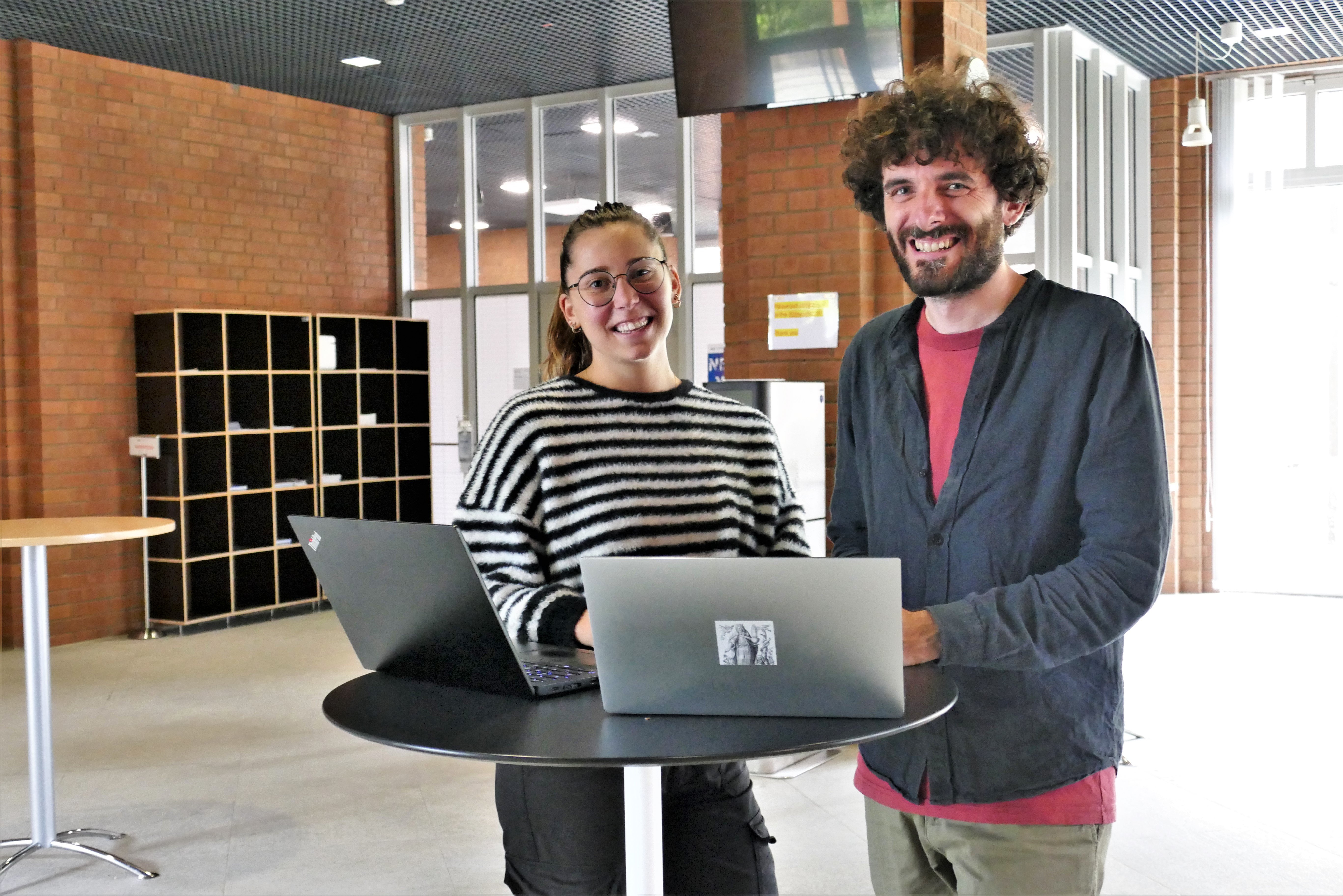How harmless turns dangerous

Bacterium Escherichia coli
(c) Galardini
MHH researcher Prof. Galardini from the RESIST Cluster of Excellence finds causes for bloodstream infections in the genes of bacteria.
Escherichia coli bacteria live in the intestines of humans and play an important role there for normal intestinal function as well as for a functioning immune system. These intestinal inhabitants do not form a uniform population, but consist of a large number of strains that differ greatly in their genome and also in their metabolism. Most strains of E. coli are harmless, but some can cause diarrhea or urinary tract infections and – if they enter the blood – bloodstream infections and sepsis via their toxins. Sepsis is the third most common cause of death in Germany.
The bacteria have caused increasingly more diseases

Professor Dr. Marco Galardinis team has studied this in more detail and found that E. coli has a significant genetic variation that contributes to the transition between the harmless life in the intestine (commensalism) and the pathogenic form. In addition, the researchers were also able to show that this bacterial species has evolved more toward causing disease over the years. “Building on these findings, we envision the creation of better molecular diagnostic tools in the future, and these results might also be important for vaccines development,” says Prof. Galardini. The team published their findings in the journal PLoSGenetics. First authors are Judit Burgaya and Julie Marin. The work originated in TWINCORE in collaboration with Prof. Erick Denamur (INSERM, Paris) and Prof. François Blanquart (Collège de France). Marco Galardini holds a professorship funded by the RESIST Cluster of Excellence at the Hannover Medical School (MHH), he leads the research group “Systems Biology of Microbial Communities” at the Institute of Molecular Bacteriology of TWINCORE.
Significant genetic differences between harmless and dangerous bacteria
The team examined a collection of about 900 E. coli isolates that caused blood infections and 370 harmless isolates. The samples were collected over a 17-year period (from 2000 to 2017) by the team of Prof. Erick Denamur. “We found significant differences between the disease-causing and the harmless isolates – both in their pangenomes, i.e. the totality of genes of the respective isolates, and in their genetic backgrounds, in terms of the presence of virulence-associated genes and antimicrobial resistance genes,” says Prof. Galardini. Using another commensal collection from 1980, the group also found that pathogenicity might have increased steadily from 1980 through 2000 to 2010.
This work is the third in a series of studies aimed at understanding the genetic determinants of the ability of E. coli to cause bloodstream infections. The team published the first two papers in 2020 and 2022 in the journal PLoSGenetics.
Text: Bettina Bandel
Wissenschaftliche Ansprechpartner:
For further information, please contact Prof. Dr. Marco Galardini, galardini.marco@mh-hannover.de
Originalpublikation:
The original paper “The bacterial genetic determinants of Escherichia coli capacity to cause bloodstream infections in humans” can be found here: https://journals.plos.org/plosgenetics/article?id=10.1371/journal.pgen.1010842
The other two works mentioned can be found here: https://journals.plos.org/plosgenetics/article?id=10.1371/journal.pgen.1009065 and here: https://journals.plos.org/plosgenetics/article?id=10.1371/journal.pgen.1010112
https://www.mhh.de/en/presse/mhh-insight/news-detailed-view/wie-aus-harmlos-gefaehrlich-wird
Media Contact
All latest news from the category: Health and Medicine
This subject area encompasses research and studies in the field of human medicine.
Among the wide-ranging list of topics covered here are anesthesiology, anatomy, surgery, human genetics, hygiene and environmental medicine, internal medicine, neurology, pharmacology, physiology, urology and dental medicine.
Newest articles

You are What You Eat—Stanford Study Links Fiber to Anti-Cancer Gene Modulation
The Fiber Gap: A Growing Concern in American Diets Fiber is well known to be an important part of a healthy diet, yet less than 10% of Americans eat the minimum recommended…

Trust Your Gut—RNA-Protein Discovery for Better Immunity
HIRI researchers uncover control mechanisms of polysaccharide utilization in Bacteroides thetaiotaomicron. Researchers at the Helmholtz Institute for RNA-based Infection Research (HIRI) and the Julius-Maximilians-Universität (JMU) in Würzburg have identified a…

ASXL1 Mutation: The Hidden Trigger Behind Blood Cancers and Inflammation
Scientists show how a mutated gene harms red and white blood cells. LA JOLLA, CA—Scientists at La Jolla Institute for Immunology (LJI) have discovered how a mutated gene kicks off…



